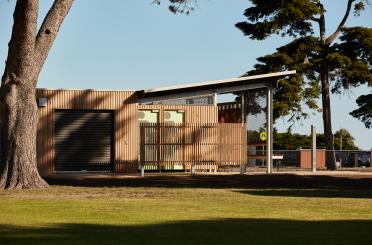WoodSolutions Proudly Sponsors - AIBS SA Chapter Conference 2023



It depends on the type of construction required. Buildings of Type A or B construction must have non-combustible external walls under Amendment 1 to NCC 2019, which came into force on 1 July 2020. Consequently, timber cladding no longer complies except for two-storey buildings of Type C construction - see Clause C1.5 below.
We consider the two James Hardie details to be suitable for application to a timber-clad wall. They are offered as alternatives, one with a metal flashing (Hardie Edge Trim), and one without a metal flashing where the cladding is extended down below the interface between the bottom plate and the concrete. In the latter case a damp proof course is suggested "where required". In our opinion the purpose of a DPC would be to protect the bottom plate against "edge dampness" in the slab, a topic discussed on the net, eg.

All timbers eventually weather to a grey tone, whatever their original colour, if left exposed without a coating. Applying decking oil will protect the timber against weathering effects such as fine surface cracking, but will also retain the natural colour to some extent. Commercial decking oils often contain a light pigment specifically to counteract the loss of natural colour. If you want to protect the timber, but also allow it to turn grey, it will be necessary to choose a finish which has no pigment.
If your column is in a situation where it is exposed to ongoing cycles of wetting and drying it is likely the crack will continue to open and close to some extent. It's important to use a filler that will accommodate such movement. Hard-setting fillers tend to come loose when the timber swells and may act as a wedge when it shrinks, causing the crack to widen. You will find suitable fillers on the net if you search with the key words "flexible wood filler" or similar.
The splits shown in the image are not continuous along the length of the column and were most likely caused by swelling and shrinking, due to moisture change, as you suggest. Since it's an internal column, presumably it will remain dry from now on and once its moisture content stabilises there will be no further movement, ie. the cracks are not likely to grow. We suggest that if the client wishes the cracks to be filled such action should be delayed as long as possible to make sure the drying process has finished. A flexible silicone-type filler should be used.
The only limitations other than the limitations arising from conformity to AS 1720.1 (adequate capacity of bolted joint relative to expected loads etc) are environmental factors such as in-service moisture content. Where moisture content remains below 15% no modification factors apply. Where higher moisture contents are likely for prolonged periods AS 1720.1 provides modification factors, and preservative treatment may be warranted. On-line guides such as that published by Carter Holt Harvey for their HySpan product may be helpful.

Are you looking for a supplier?